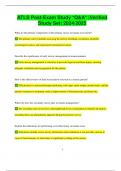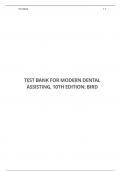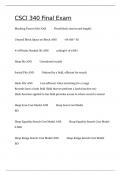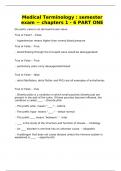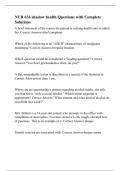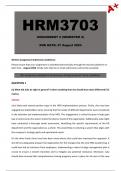Exam (elaborations)
ATLS Post-Exam Study *Q&A* |Verified Study Set| 2024/2025
ATLS Post-Exam Study *Q&A* |Verified Study Set| 2024/2025 What are the primary components of the primary survey in trauma assessment? The primary survey includes assessing the airway, breathing, circulation, disability (neurological status), and exposure/environmental control. Describe the...
[Show more]
